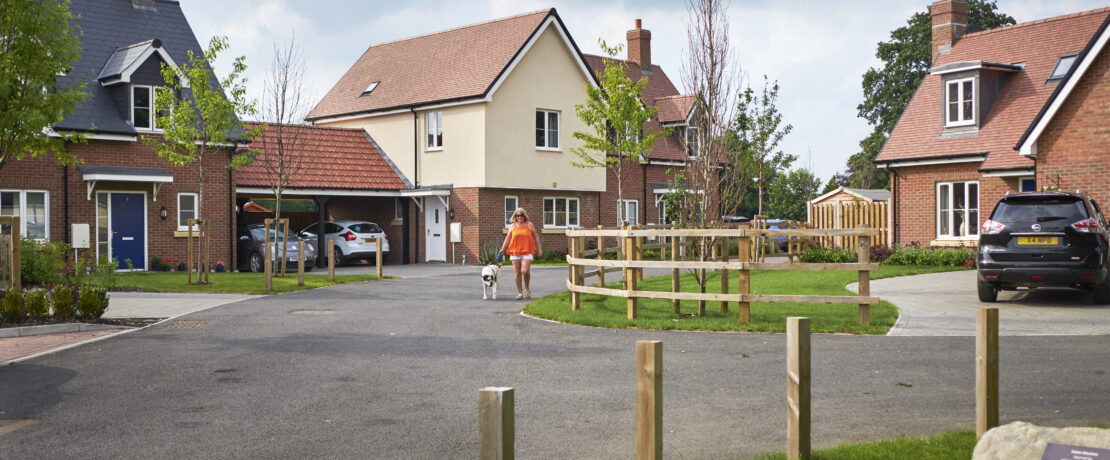Our rural affordable housing campaign explained
Following the launch of a groundbreaking report on rural affordable housing, CPRE is campaigning for the government to create a new generation of affordable and sustainable rural housing.
- At current rates, some will be waiting 93 years for social housing
- Rural homelessness as leapt 40% in five years
- Chronic lack of rural affordable housing is causing homelessness forcing people out
- Countryside communities being hit by stagnating wages and rising house prices
- But it is possible to build affordable and sustainable community-led homes
Everyone has a right to live in a home they can afford, wherever they live. Our recently published report found a chronic shortage of genuinely affordable housing across rural England. This has led to growing numbers of households being priced out of the countryside, increased homelessness, and 93 year social housing waiting lists.
What’s causing the crisis?
At its core, there’s simply not enough genuinely affordable social housing being built. Current ‘affordable’ schemes are not affordable to people on lower incomes, and developments elsewhere (including in the Green Belt) are often dominated by expensive executive homes.
Several worrying factors are making the problem worse. An increasing number of second homes and short-term lets is driving up rental prices and restricting supply. Stagnating wages in rural communities mean many simply can’t afford a decent quality home, especially given record house prices. Shockingly, some of those who are on social housing waiting lists will be waiting 93 years to get a home at current rates of construction. This is driving deprivation and homelessness in rural communities – in fact – rural homelessness has leapt 40% in just five years.
Our research found a huge disparity between house prices in rural areas and urban areas. House prices in the countryside have increased at almost twice the rate of those in urban areas over the last five years. However, rural wages have stagnated and are completely out of step with these increases. It couldn’t be clearer that rural communities are being left behind, with people forced to leave the areas in which they grew up. This is draining our countryside of skills, economic activity and vital public services.
What are the solutions?
We’re calling for the government to urgently address the rural affordable housing crisis. We need to redefine affordable which is currently out of step with the economic realities in rural communities. Current definitions broadly refer to housing or rent that is set at 80% of market rates, and we want to see ‘genuinely’ affordable housing which reflects local incomes.
The 93 year waiting list for social housing is simply not acceptable. We’re calling on the government to build a new generation of sustainable social housing in line with local need. This means setting ambitious targets for social housing in local planning policy, as well as restricting the sale of social homes bought through the Right to Buy scheme to protect supply. The government’s power in this regard only applies to half of all parishes in England.
The huge increase in short-term lets and second homes is squeezing rural housing supply. There is no justice in a system where households are forced to wait years for a home they can afford, while others benefit from multiple properties which are often vacant. Our report in 2021 laid bare the impact of short term lets on rural communities, and that’s why we need legislation to control it, with powers for local authorities to increase tax on second homes.
Rural, affordable and sustainable
Across England, there are many examples of what ‘good’ looks like. CPRE will always support affordable housing schemes where they meet local need, with our 2020 guide providing practical guidance on delivering new affordable homes. We know that some councils are leading the way, and from lifelong homes in North East Lincolnshire to rural Passivhaus developments, it’s entirely possible to deliver homes that are both affordable and sustainable.
However, we know that there are many conflicting demands for our finite countryside. The need for affordable homes, food security, access to green space and climate mitigation can all be met by a planning approach which listens to the voices of local communities. We’re also urging the government to deliver a land use strategy, which sets out how we can use our land to best meet the needs of people and planet.
Where should the homes go?
Affordable homes should be prioritised in sustainable locations, in particular in town and village boundaries on brownfield (previously developed) land and vacant sites. Our research shows that there are enough brownfield sites in England for over one million homes. This approach helps regenerate communities and connects homeowners to vital public services.
Protecting and enhancing our Green Belts continues to be a key focus for CPRE because it provides space for farming and nature while locking up carbon to tackle climate change. Our research shows that most of the houses being built on the Green Belt are expensive, car-dependent homes cut off from local infrastructure. This gives us a strong indication that releasing Green Belt land will not alleviate the affordable housing crisis. However, local planning policy needs to better support sensitively designed rural exemption schemes (RES) to deliver community-led affordable housing in the Green Belt. With the right approach, we can build the affordable homes we need without sacrificing our natural spaces.
Planning for change
We have a successful track record of working with ministers, MPs and civil servants to effect positive change. Most recently, we were able to ensure the public would be consulted on national planning policies in the Government’s Levelling Up and Regeneration Bill (LURB) which became an Act of Parliament in 2023 (LURA). We continuously engage with government and the opposition and will be working hard to influence manifestos for the next general election.
Through our campaign, we’re making the case that the housing crisis is a housing affordability crisis, with homes being built that millions of people simply cannot afford. We are pleased political parties of all colours recognise the problems with housing, particularly the Labour party’s commitment to recycle already developed land first and the Liberal Democrats’ policy to deliver 150,000 social homes every year.
We’re also hoping for a positive outcome on short-term lets and second homes. A register was introduced in the LURA, and we’re working with peers to ensure that short-term lets and holiday homes are managed through seperate legislation.
Get involved
There are lots of ways you can get involved. You can explore homelessness figures in your area and put pressure on your local MP to address it. You can find out more about rural affordable housing schemes in your area by visiting your local council’s website (find your local council here). If you live in a rural area and have been affected by the rural affordable housing crisis in any way, you can also get in touch with us and share your story.
You can also support us by making a donation or becoming a member of CPRE. After a year full of successes and positive progress, we’re working extremely hard this year to ensure that rural communities are central to the next government’s manifesto. Your support can help us put pressure on the government to urgently address the rural affordable housing crisis.
If you want to find out more, you can read our rural affordable housing report here. We’ve also written a handy jargon-buster which explains some of the key terms.





